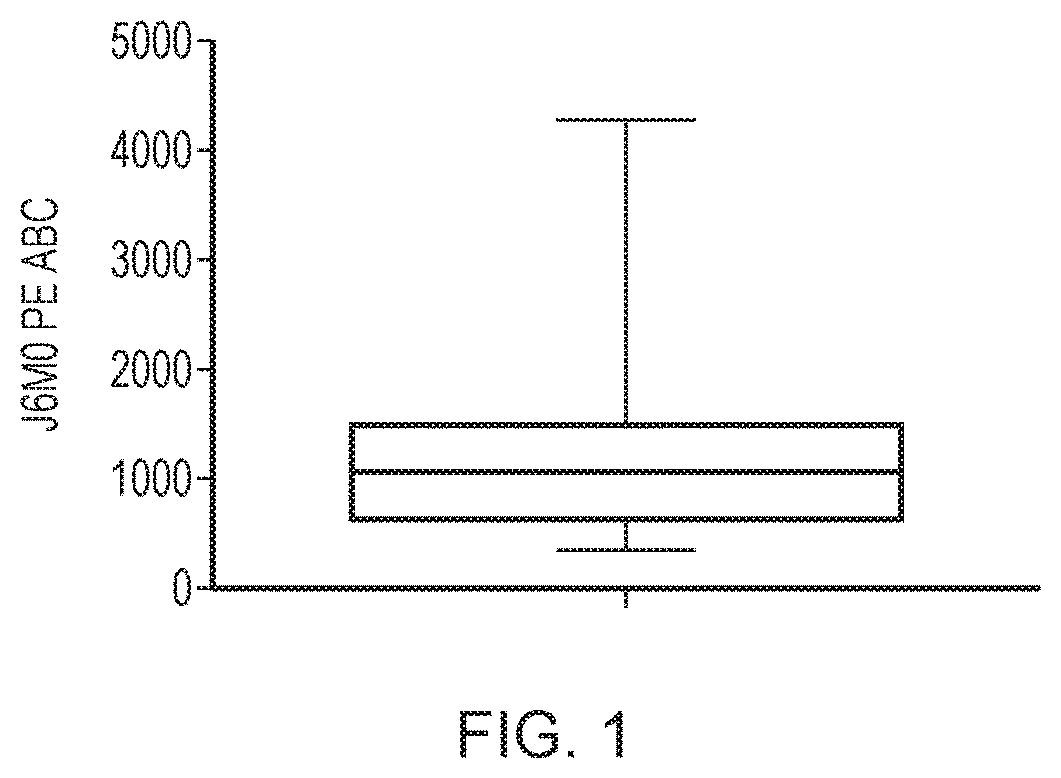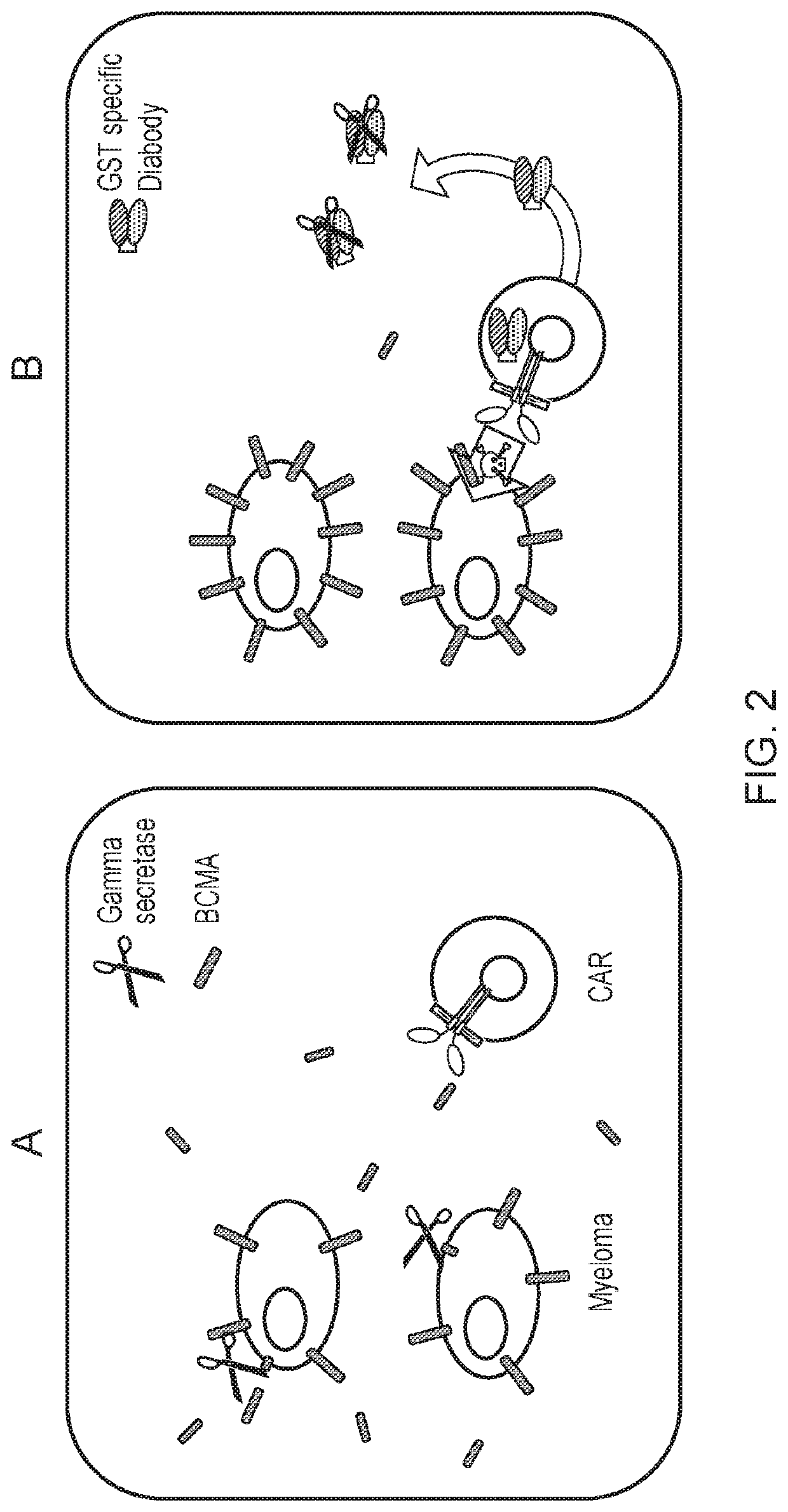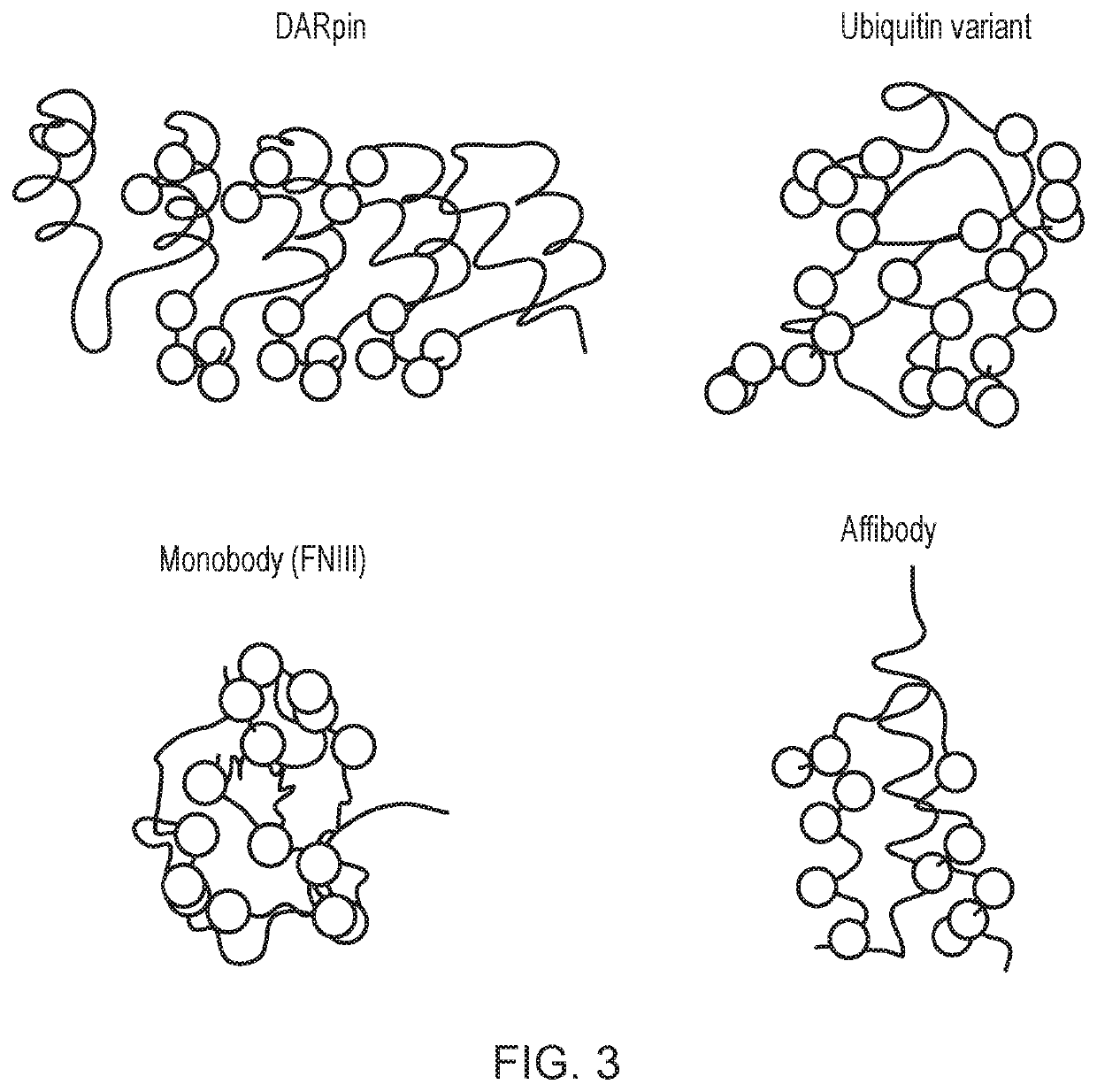Engineered t-cells co-expressing an Anti-bcma car and an Anti-ectoenzyme antibody and their use in the treatment of cancer
a technology of t-cells and t-cells, which is applied in the direction of lysates, genetically modified cells, fusions for specific cell targeting, etc., can solve the problems of systemic inhibition of these enzymes and the low level of bcma expression of tumour cells, and achieve the effect of reducing the risk of cancer
- Summary
- Abstract
- Description
- Claims
- Application Information
AI Technical Summary
Benefits of technology
Problems solved by technology
Method used
Image
Examples
example 1
n of BCMA on Surface of Multiple Myeloma Cells
[0231]Primary myeloma cells were isolated by performing a CD138 immunomagnetic selection on fresh bone marrow samples from Multiple myeloma patients that were known to have frank disease. These cells were stained with the BCMA specific J6MO mAb (GSK) which was conjugated to PE. At the same time, a standard of beads with known numbers of binding sites was generated using the PE Quantibrite bead kit (Becton Dickenson) as per the manufacturer's instructions. The BCMA copy number on myeloma cells was derived by correlating the mean-fluorescent intensity from the myeloma cells with the standard curve derived from the beads. It was found that the range of BCMA copy number on a myeloma cell surface is low: at 348.7-4268.4 BCMA copies per cell with a mean of 1181 and a median of 1084.9 (FIG. 1). This is considerably lower than e.g. CD19 and GD2, classic targets for CARs.
example 2
n of Gamma Secretase Targeting DAbs
[0232]Llama vaccination is used to generate single domain binders to gamma secretase (GST). Animals are vaccinated with peptides consisting of key residues on presenilin (PS1) and nicastrin (GST complex components) conjugated to an immunogen. Hybridomas are generated and screened on recombinant protein, blocking activity is assessed on a GST dependent cell line (A549) and affinity is assessed by surface plasmon resonance. Bivalent DAbs are created using flexible serine-glycine linkers to conjugate single domain inhibitory binders that target separate enzymatic domains.
example 3
Ectoenzyme Inhibition by Anti-GST DAbs
[0233]The dAbs generated in Example 2 are purified and incubated with MM cell lines (expressing low / high BCMA) and primary bone marrow (BM) derived MM cells in vitro. Changes to BCMA expression or sBCMA are quantified by FACs and ELISA respectively and compared to DAPT (a GST blocking molecule). GST blockade (via notch) can affect T cell function so the effect of DAb on resident and CAR T cells is assessed by CD3 / CD28 mediated proliferation and cytokine release following GST blockade. If there is a significant deficit to T cell function, CAR T cells are cotransduced to express a PS1 mutant and anti nicastrin DAb to maintain GST function on the T cell as PS1 mutations have been associated with GST function independent of nicastrin.
PUM
 Login to View More
Login to View More Abstract
Description
Claims
Application Information
 Login to View More
Login to View More - R&D
- Intellectual Property
- Life Sciences
- Materials
- Tech Scout
- Unparalleled Data Quality
- Higher Quality Content
- 60% Fewer Hallucinations
Browse by: Latest US Patents, China's latest patents, Technical Efficacy Thesaurus, Application Domain, Technology Topic, Popular Technical Reports.
© 2025 PatSnap. All rights reserved.Legal|Privacy policy|Modern Slavery Act Transparency Statement|Sitemap|About US| Contact US: help@patsnap.com



